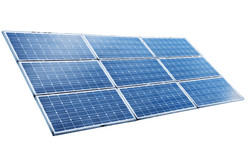New insight into solar cell function
DSSCs have attracted a great deal of attention as promising alternatives to traditional silicon-based solar cells, especially because they contain less expensive materials and require relatively simple manufacturing processes. Such cells consist of a photosensitised titanium oxide (TiO2) anode (covered with a molecular dye that absorbs sunlight), a liquid electrolyte and a metal cathode. Given that the photocurrent depends on the dye nanomaterials, elucidation and control of their interfacial activity are indispensable for increasing the photoelectric conversion efficiency. Within the EU-backed POLYMAP (Mapping and manipulating interfacial charge transfer in polymer nanostructures for photovoltaic applications) project, scientists elucidated a relationship between the electrochemical or electrocatalytic activity of materials and changes in their morphology occurring at electrode interfaces in DSSCs. By using a new high-resolution electrochemical scanning probe technique, 'Scanning electrochemical cell microscopy' (SECCM), scientists overcame challenges associated with studying nanostructured electrode materials. By illuminating electrodes and using SECCM, they successfully mapped with sub-micrometre resolution variations in the photoelectrochemical activity of TiO2 aggregates coated with a dye. Modulating the light intensity enabled the team to study loss processes that limit conversion efficiencies. Given their fundamental role in charge-transport mechanisms, work was also geared towards preparing and conducting electrochemical characterisation of conjugated polymers that ranged in thickness from 5 to 500 nm. After putting them under the microscope, they observed variations in the electrochemical activity mainly because the electroactive films were heterogeneous. By also combining SECCM with atomic force microscopy and Raman microspectroscopy, the team found a relationship between the structure and reactivity of the electrodeposited organic films. Other materials such as carbon nanotubes increased the chemical reaction rate and were found to be electroactive along their entire length. However, their morphology impacts on their reactivity. Scientists also demonstrated that pristine, defect-free carbon nanotubes are as effective electrocatalysts as gold. This has important implications especially for producing hydrogen peroxide for use as a fuel. Lastly, iridium oxide nanoparticles were extensively investigated as water-splitting photocatalysts and demonstrated notable variations in their electrocatalytic activity as a function of the electrode potential. Project results provide a new view of photovoltaic devices at the nanoscale, ultimately allowing for the design of improved DSSCs.
Keywords
Dye-sensitised solar cells, conversion efficiency, electrochemical, electrocatalytic activity, scanning electrochemical cell microscopy







